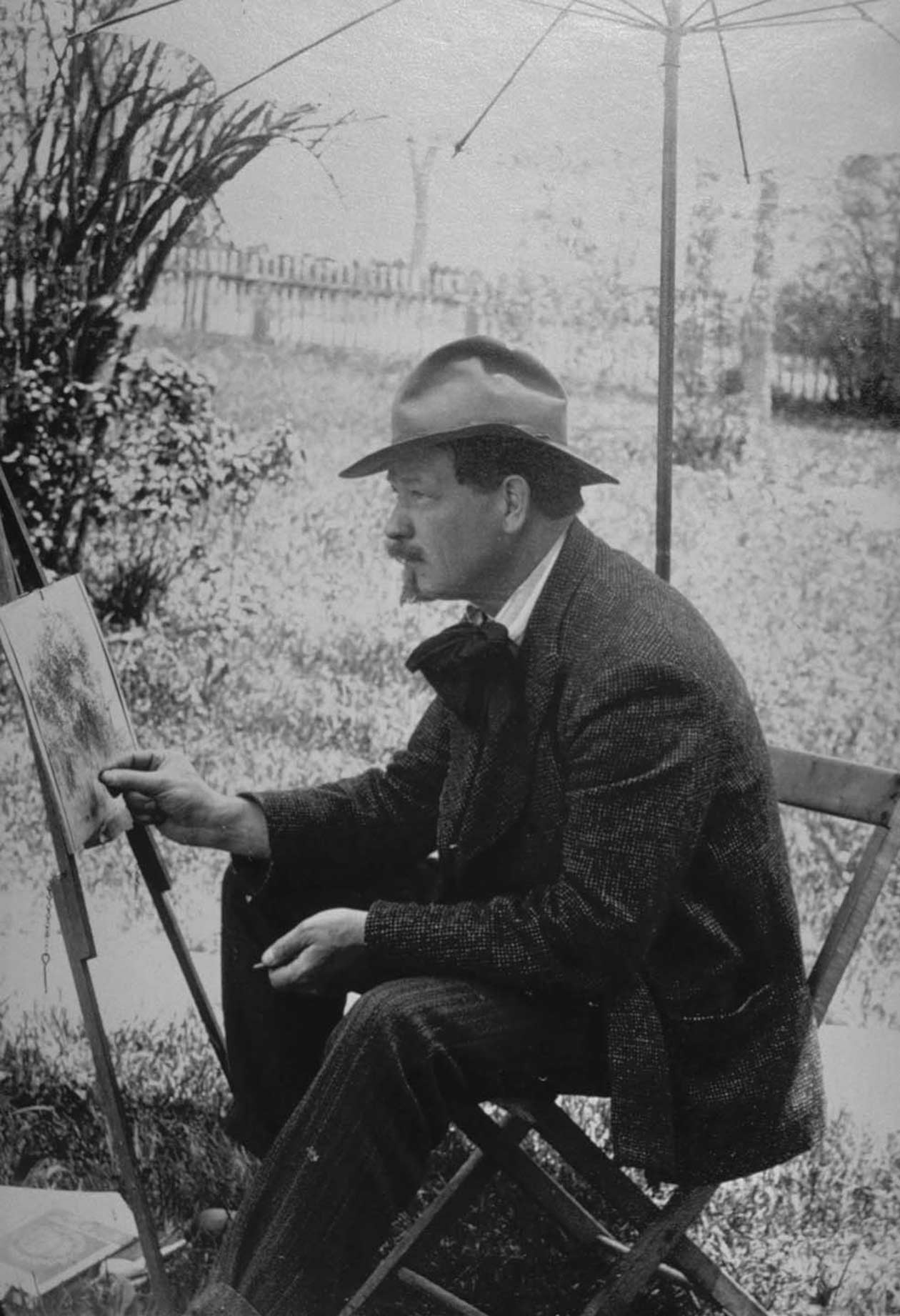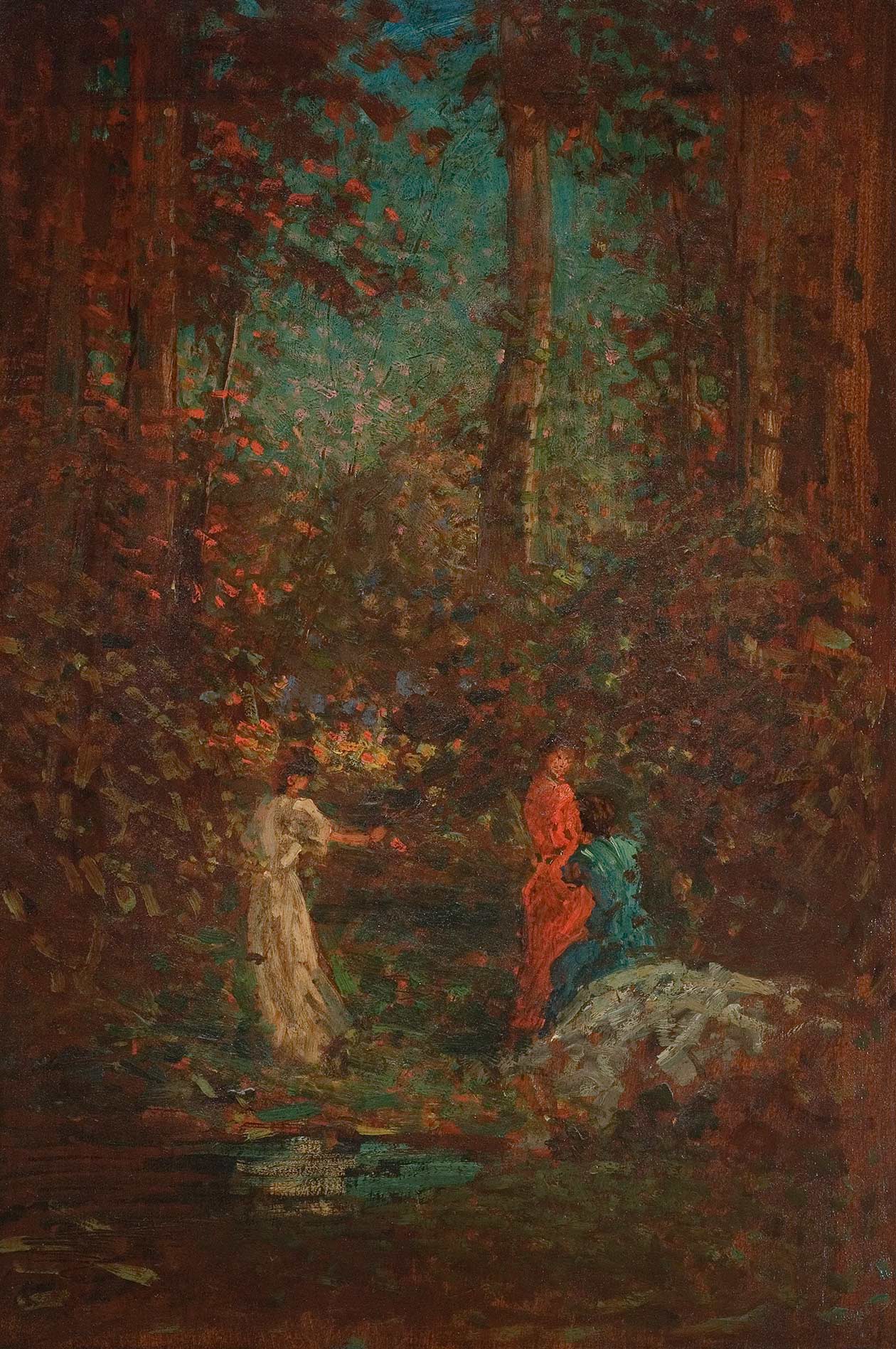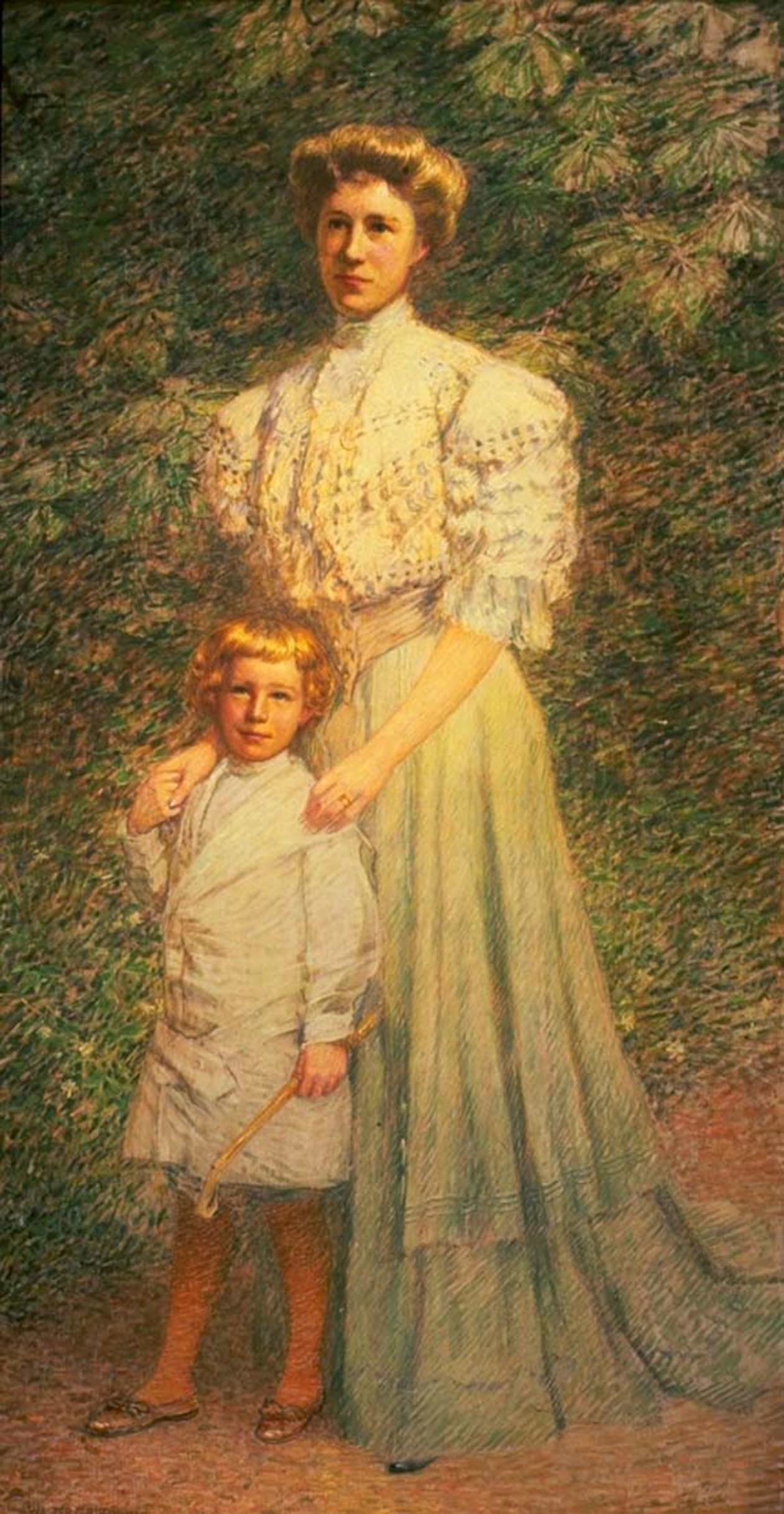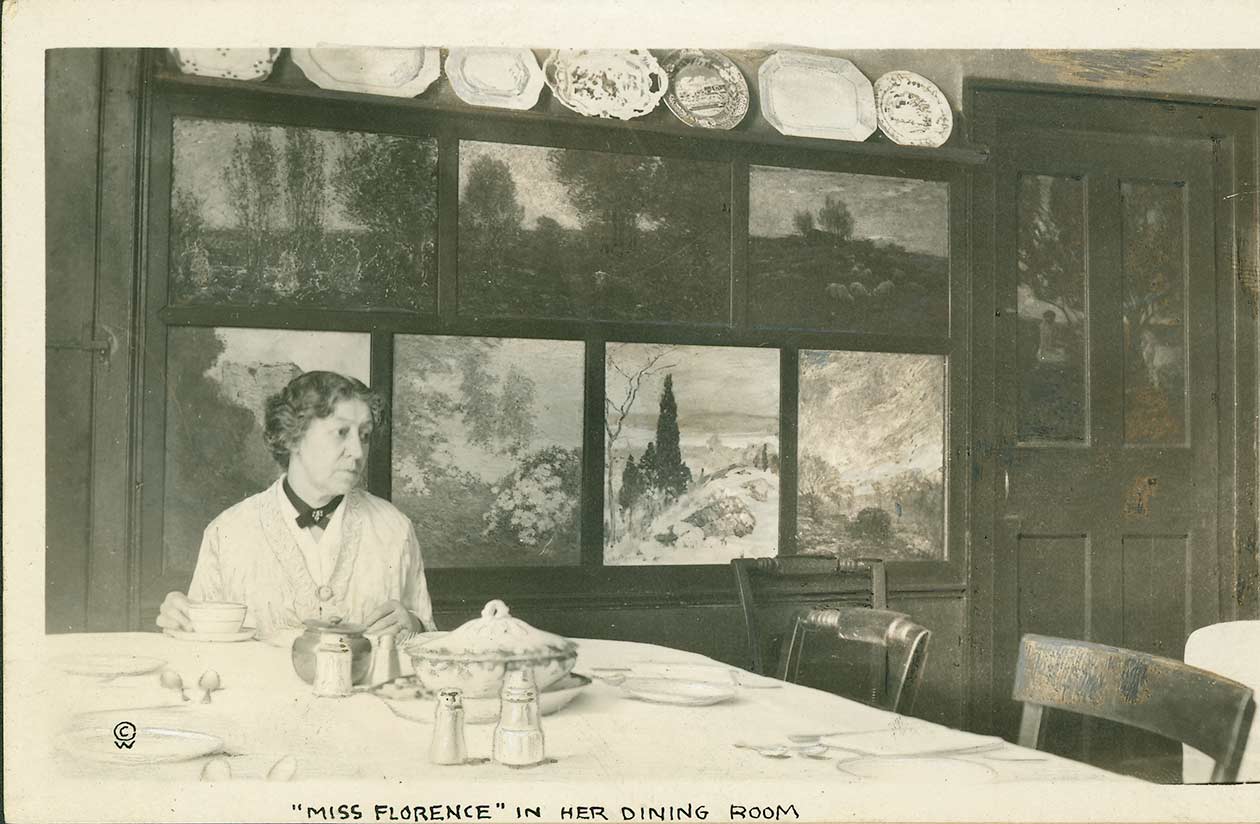Collections
In Situ: The Painted Panel
- Museum Hours: Tuesday through Sunday, 10am to 5pm
Walter Griffin (1861 – 1935)
Ladies in the Woods
Ladies at leisure, relaxing outdoors on a sunny day in meadows, woodlands, or by a river, was a subject often chosen by the artists at Old Lyme. Panels in the dining room by Robert Nisbet and Childe Hassam treat the theme, as do easel paintings in the Museum’s collection. Griffin’s panel, however, is distinctive, not only because it includes more women and because it presents them in a friskier mood – as the leaping dog has sensed – but because these figures almost blend into the landscape.
It is difficult to make out their very number, let alone details. Indeed, the white lines that outline and overlay them make these ladies seem ghostly and mysterious – like spirit figures seen only in a dream or in the imagination. Yet they are in a Lyme landscape with Griffin’s trademark shimmering trees.
Those slender trees carry one’s eye to the top of the panel but are countered by the strong horizontal of the field of gold that stretches from side to side and by the strange creaminess of the sky. The ladies are pushed close to the picture plane, for their space in the foreground is narrow, bounded by the trees and a stream. Were it not for the rich colors, one might at once think of a Classic marble frieze, where a row of figures is carved in bas-relief. Griffin appears to have combined in this panel his era’s interest in the visual excitement of Impressionism, the calm of Neo-Classicism, and the traditional Western symbolism that connects women with nature.
At Old Lyme, Griffin devised a painting technique, apparent in this panel, which employs a brush often loaded with two colors at once, not only to apply color but to shape and model forms. His art would change later, in Norway, in France, and in Italy, where he lived on and off for years. He became one of the most highly regarded American artists of his time, and in 1935 the National Academy of Design honored him and his good friend, Childe Hassam, with a joint memorial exhibition. It has been said, however, that Griffin’s arts came alive at Old Lyme.







